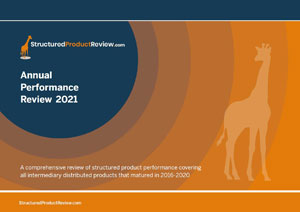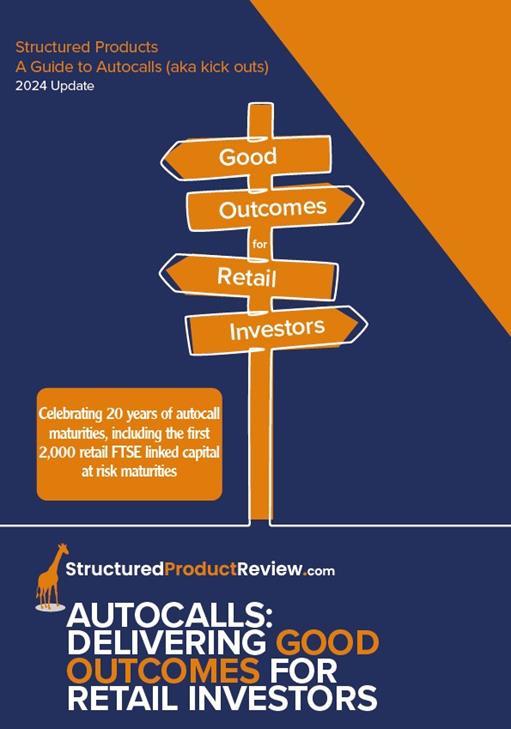This misinterpretation arose following the FSA’s review of advice given to consumers to invest in structured investment products backed by Lehman Brothers from November 2007 to August 2008. The first publication in this regard was in October 2009 and took the form of a paper entitled Quality of advice on structured investment products[1]. The research was conducted by reference to the eleven firms who were responsible for a significant number of Lehman Brothers product backed sales.
In the October paper the FSA published examples of good and poor practice and it was one example of identified good practice, from one of these advisers, that set the wheels in motion for one of the most misquoted rules that never was:
“Good practice: level of investment in structured products
One adviser set himself initial guidelines of 10% (single product) and 25% (multiple products) for the maximum exposure his customers should normally have to this product type, taking into account the customer’s wider circumstances.”
Whilst this in itself might not have been enough to influence other advisers, what followed certainly did. As part of their ongoing investigation all firms that had recommended structured products were asked to complete a suitability assessment template for all clients. One of the questions in the template asked:
“Where the proportion of the customer’s savings and investments held in structured products is above 25%, is there a good reason for this?” and “Where the proportion of the customer’s savings and investments in in the recommended product is greater than 10%, is there a good reason for this?”[2]
This left many advisers somewhat bewildered as to when these thresholds that required ‘good reason’ to exceed were introduced. Some clarification could be found in the explanatory note “Using the FSA’s structured investment product advice suitability assessment template”[3] which included the following:
In respect of the 25%:
“This question does not mean that investing more than 25% of the portfolio into structured investment products is always wrong, but it could be and you need to consider whether this is the case. For example, it may be that some of the existing structured investment products are held with the same plan manager and counterparty, concentrating the risks involved in investing in this product type. On the other hand, it may be that the other structured investment products use a wide range of counterparties, helping to diversify risk, and investing a higher proportion of the customer’s assets into structured investment products is easier to justify".
And in respect of the 10%:
“Different customers will have a different capacity for loss so we have suggested a threshold of 10%”.
Confusion still however reined and as a result the FSA subsequently published some much needed Frequently Asked Questions: Structured investment products suitability assessment template – FAQs[4] which went to great lengths to explain that these 10% and 25% levels were neither limits, nor safe thresholds but simply what they considered to be “trigger points” for prompting further assessment of suitability.
Whilst no one would argue with the principle of diversification and this clarification from the FSA should have set the record straight, the 10% and 25% rule has perpetuated without any basis for the arbitrary numbers.
At the 2012 UK Structured Products Association London conference, Richard Lawes from the FSA further attempted to clarify the position when, in his speech discussing the post Lehman’s review he said:
“One of the areas we looked at in the Review was concentration in structured products. At the time and since then, this has been subject to some misunderstanding and misinterpretation. We talked about 10% and 25% trigger levels, and in some areas they were misunderstood as ceilings on how much you could have in structured products. What we were actually saying was, if your client has 10% or more in structured products with a particular counterparty then questions would need to be asked about whether there is over exposure to that counterparty".
“Similarly, if a client has 25% or more of their portfolio in structured products, as opposed to other types of products, it is critical to view the total picture. The figures were a trigger for those sorts of questions to be asked rather than an absolute ceiling".
“It’s a good principle to diversify risk and that is what we were emphasizing.”
While diversification of counterparties and assets should be obvious to any adviser, the 10% and 25% exposure limits are clearly nothing other than a guide that has emanated from one adviser, rather than a set of rules or metrics.
Those advising on and investing in structured products should always be cognizant of counterparty risk but with approximately ten, or more counterparties participating in the UK market the ability to broadly diversify that risk is significant. As for overall exposure to structured products, this might be better dictated by the appropriate exposure to the underlying assets to which the products are linked and the extent to which the capped returns are palatable, rather than any arbitrary percentage plucked from the sky.
[1] http://spresources.co.uk/spr/resources/fcaqualityofadvicestructuredproducts.pdf
[2]http://spresources.co.uk/spr/resources/sipsuitabilityassessmenttemplate.pdf
[3] http://services.spresources.co.uk/SPR/Resources/sip_template_guidance.pdf
[4] http://spresources.co.uk/spr/resources/sipsuitabilityassessmenttemplate.pdf"
Also in this section
- How old is too old? Are structured products to die for?
- Product focus - October 2024
- Q3 2024 Issuance
- Q3 2024 maturity results
- A share of spread bets on steroids?
- Product focus - September 2024
- Maturities of the month - August 2024
- Right on time
- Product focus - August 2024
- Keep calm and zoom out
- 2,000 and counting
- Q2 2024 maturity results
- 20 years of autocall maturities
- Product focus - June 2024
- Fixed income or interest?
- Maturities of the month - May 2024
- The barrier debate - revisited
- Product focus - April 2024
- Maturities of the month - April 2024
- Time to call
- I don't believe markets are ever too high for Structured products!
- Notes on counterparty exposure
- Return of Nikkei
- Q1 2024 issuance
- Q1 2024 maturity results
- Structured Products – AAAAAGH!
- Hop in CIBC
- Re-enter Santander
- How to build a financial fortune - revisited
- Issuance in 2023
- Where's the risk?
- Questionable offerings
- Challenging the case against structured products - 'Loss of dividends'
- Navigating the investment landscape
- Challenging the case against structured products - Counterparty risk
- 6-year autocalls approaching final destination
- 1,750 FTSE capital at risk autocall maturities
- The leopard that changed her spots
- Q3 2023
- Challenging the case against structured products - Keydata
- Dilemmas for UK IFA's and the unique role of Structured Products
- 'High charges'
- Precipice bonds
- Intro
- FTSE 100 Contingent Income
- Indexing the indices
- Something different
- Investing through volatility
- 100 10:10s
- The best or worst?
- The 10%/25% 'Rule' that never was
- Structured products and the yield curve
- Fixed income: Capital at risk?
- Prospects for UK inflation - and fun with A.I!
- The Barrier Debate
- More Deposits for now
- Last of the Americans
- What if?
- Time heals all wounds, we hope...
- How to diversify portfolios using structured products?
- The Proof Is In The Pudding...
- Debunking Structured Misconceptions
- 1,500 FTSE Capital-at-Risk Autocall Maturities
- Q3 2022 Maturity Results
- What do we prefer?
- Deposits vs Capital ‘Protected’
- There’s time yet…
- Where did you invest your clients?
- A Six-Month Reflection
- Return of the Rev Con
- Happy 2nd Birthday FTSE CSDI
- Q2 2022 Maturity Results
- The best and worst yet still the best
- Critique my Suitability - Mariana 10:10 Plan June 2022 (Option 2)
- 10/10 for 55 10:10’s
- Q1 2022 Maturity Results
- 'How to build a financial fortune': a follow up
- Critique my Suitability - Mariana 10:10 Plan April 2022 (Option 2)
- 2021 Capital-at-Risk Autocall Maturity Review
- An unwelcome return...
- CSDI's First Birthday
- Bon Anniversaire
- Introducing the FTSE Custom 100 Synthetic 3.5% Fixed Dividend Index
- Q3 2021 Maturity Results
- Critique my Suitability - Mariana 10:10 Plan October 2021 (Option 2)
- Blurring the lines...
- Beware of false knowledge; it is more dangerous than ignorance
- Good news, bad news...
- Certainty is Certainly a Benefit
- Critique my Suitability - Mariana 10:10 Plan September 2021 (Option 2)
- A Twenty-Year Progression
- Q2 2021 Maturity Results
- Nine 8:8s Post Positive Returns in Falling Markets
- Critique my Suitability
- Q1 2021 Maturity Results
- Morgan Stanley’s Marvelous Maturity Medley
Current Products
We review the UK's retail structured investment sector, providing pertinent support for Professional Advisers and relevant research tools.
View all ⟶


